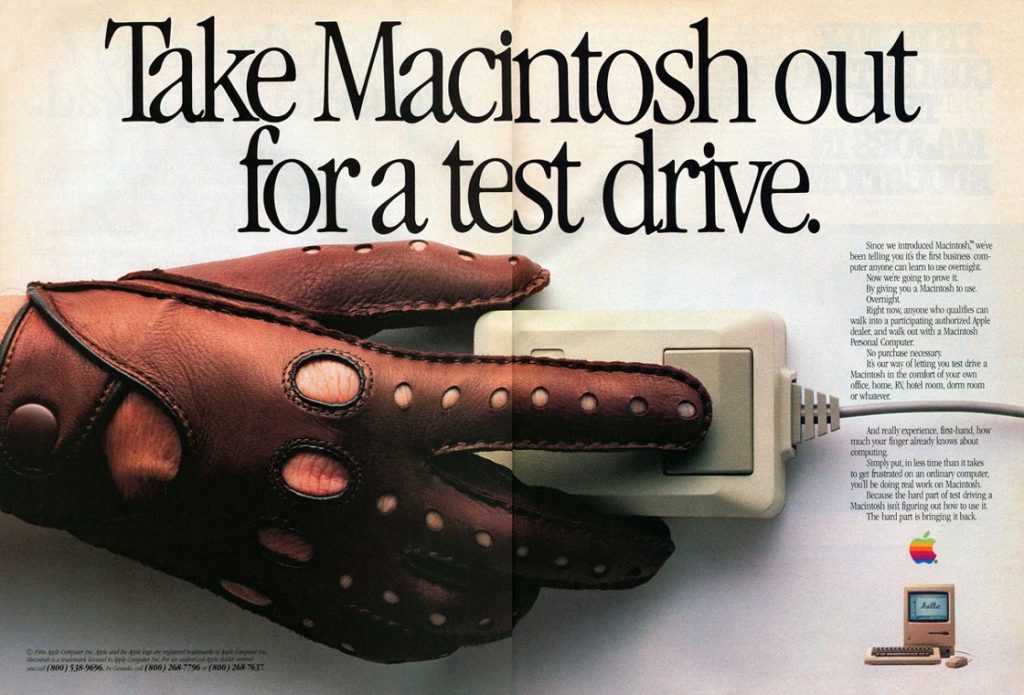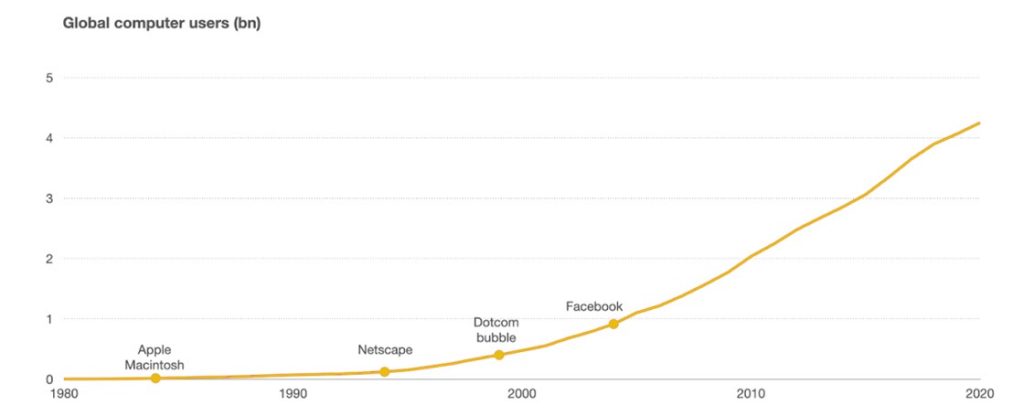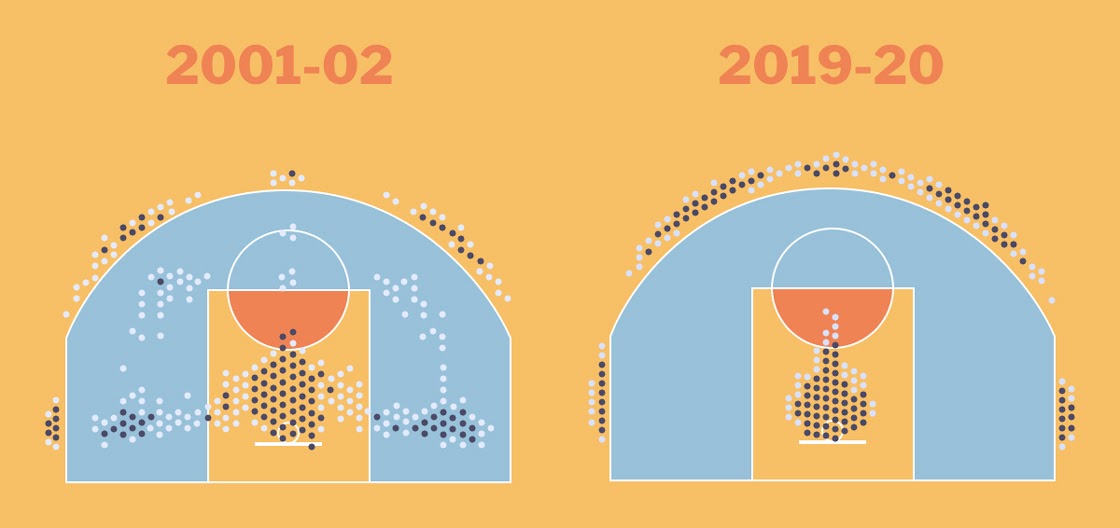Back to the future I : Collapse of the Croatian IT industry
For three decades, Croatia’s IT industry has filled state coffers and warmed developer chairs. Nevertheless, politicians ignore domestic potentials, as well as the obvious Internet technology trends.
I had a similar introduction in last year’s column, typed at the time when the first Croatian corona case flaunted Milan. In that article, I made the statement that service IT is equally valuable to production one; while Ivan worshiped product development as the main potential of the Croatian IT industry.
The ensuing pandemic year demonstrated the maturity of the entire IT – product as well as service emerged like the whiskers of a playful seventh grader.
The infobip is valued at $1 billion and Rimac is also breathing down their necks; Microblink and Photomath received generous investor checks while Nanobit was sold to Stillfront for potentially billion kunas. My SQL teacher Algebra was named EY Entrepreneur of the Year, Porsche and Infinum danced in a joint venture, and the Five, in the crescendo of this introduction, nailed it with the sale to Endava which sifoned 250 million kunas to Heinzelova. Our editor Ana Marija reports bare statistics for the skeptics – the HGK report confirms earlier predictions and shows that the service sector accounts for 60% of Croatian IT exports and 70% of total IT revenues.
However, the current ping-pong and unknowns about the National Plan for Reconstruction and Recovery (NPOO) proved a long-term feature of Croatian digital industry – these companies have succeeded despite the government ignoring the IT and therefore we will focus this article series on that.
Bureaucratic indolence is becoming a handbrake to the development of the IT sector, and we did not reach such a state, explained through the first two Internet waves, overnight. On the other hand, Croatian society has the potential to breed a unicorn stable; and for such a trip we need a symbiosis with the government and three actions for the third coming wave which I will describe below tomorrow.
The first wave of internet technologies
The anarcho-capitalists who read this must be thinking, “We don’t need the State; the whole Silicon Valley was created by pioneers, individuals with wavy blond hair, surfing that libertarian board and designing AltaVistas.” They may even recall GeoCities, Yahoo or the cracking of the US Robotics modem when connecting to a network of all networks. It was this movement that spawned the toxic culture of Silicon Valley and tech bros who, with the development of applications and without the influence of the state, planned to change society on their own. Yet, as the legendary and deeply insightful essay “The Californian Ideology” describes, the reality is diametrically opposed.

The birth of the internet in the era of Ronald Reagan
Internet “plumbing” from the 80’s depended on the work of decentralized pioneers, but in fact it was DARPA that architected the first version of the Internet and the Internet protocol package. The TCP / IP was created around 1975 and allowed the sending of files, e-mails or remote logins between two computers. In addition, U.S. governments invested massive funds in Silicon Valley, other states, and their business infrastructure in the early 1980s.
On the other side of the Atlantic (and about 15 years later) the first version of HTTP and HTML was being created at academic CERN. Tim Berners Lee was then brainstorming how to send scientific papers to remote computers. DARPA’s work on the Internet protocol enabled him to develop the concept of describing hypertext (HTML) and its protocol (HTTP), which in turn allows the transfer and display of formatted data between two computers and voila; we just described the backbone of all web applications in one sentence. The team’s fetish for publishing online scientific papers also led to the invention of HTML tables, later headaches for all web designers and photoshop slicers.
The achieved symbiosis of centralized institutions, academia and decentralized IT entrepreneurs led to the massive success of the first wave of Internet technologies, without which you probably would not have even read this article.
The technology of that time generated social changes, new jobs, and a lot of leisure – remember Winamp Skins, never-ending torrent downloads or the (r)evolutionary Diablo. It was Usenet that invented fierce threaded discussions, but it also pioneered fierce advertisements…

A new caste of virtual entrepreneurs was also initiated, growing on the foundations of the aforementioned California ideology of biztech self-sufficiency. An example of such a sequel is, for example, Marc Andreessen, the creator of the Netscape browser and the proclaimer of one of the most famous programming maxims, which we will discuss later.
What did Croatia’s government do in the 1990s?
The rise of that virtual entrepreneurial caste and the explosion of digital applications that followed was astounding – except in St. Mark’s Square. But no one is saying that Croatia should have stood side by side with Silicon Valley, DARPA or CERN and enabled the opening of Osijek’s Netscape office.
With the exception of CARNET and similar projects, the Croatian government didn’t have anything to offer in terms of launching world technology trends. Because we would probably end up in an HBO “San Francisco, we have a problem” mockumentary.

The real failure of the ruling class in the 1990s is actually hidden behind a prosaic managerial rule – “The Shirky Principle”. It says that organizations do their best to keep problems they have solutions for.
In the language of the street, the laziness of the judiciary, and the continued existence of a bureaucratic apparatus which by default considered entrepreneurs thieves, are the main sins of 90s governments.
The Shirky principle was in fact the foundation for all subsequent ruling moves towards the economy, and this “bureaucratic approach” is also evident in the NPOO, current horizontal subsidies or the return of funds for earthquake-damaged chimneys (I didn’t placed a link… try to get the list of necessary documentation on your own): /)
vi se ode zajebavate, a oni iz nanobita sutra ujutro mora opet na šalter.— mali iznajmljivač
(@_kostanic) April 5, 2021
But who knows, maybe the rulers assumed that something fraudulent was being cooked with the internet as well, especially as the 90s were coming to an end!?
Between 1995 and its peak in March 2000, the Nasdaq Composite Index of the stock market grew by 400% – and the digital excitement lasted throughout the 1990s. Combine small interest rates into this tense bubble, which in turn enabled the flood of Venture Capital money and the consequent, continuous birth of new startups.
Andreessen and the crew drank tons of champagne, and the sound of crackling modems echoed through more and more balconies, but as GameStop showed us, biztech tends to inflate rather sensitive balloons. Alan Greenspan warned in 1996 of a possible balloon deflation, and who wants to ruin a party when everything is moving towards the moon!?
The second wave of internet technologies
From Y2K to SARS-CoV-2 virus
Unlike the Y2K virus, which barely scratched any hard drive, the bursting of the dot.com bubble in 2000 swept almost the entire Internet ecosystem – companies like WorldCom, Global crossing, Pets.com, Webvan or Boo.com simply went bankrupt. I’m just listing them all, and you’re wondering “Who are you, man?”
Many fled and predicted the collapse of the Internet industry (and our government among them?), but the opposite effect occurred – an upgrade. “Plumbing” remained, as did loyal fans of the web and digital. Companies like Amazon, Qualcomm, or Cisco (down 86%) lost a massive share of the market capitalization, but survived.
Symbolically, the creators of the second wave said that their technologies were web 2.0 applications for the new millennium, and although they were basically small companies at the time, they were not wrong. Our leaders failed to see all future opportunities, which were later discussed continuously on Netokracija…

Fly with Kiwi, then call Uber to your AirBnb
Take the music as an example. The music bands also sold playing devices and physical copies of the album in the 90s, but since 2000 everything has been moving to the cloud. If you switch from Android to iPhone today, you won’t lose playlists – “Access” has replaced physical ownership. The entire music industry grossed just under $20 billion, while Apple inc. alone collected over $260 billion. Below is the graph showing the most powerful companies in the world created in the 20 years of the second wave. Spoiler alert: they are all from the IT sector.
Tesla is a two-sided example where the bull part of the market considers it a software company, and the bear part of the market considers it an automobile company. Elon’s goals such as battery life, driving experience or autonomy (as the programming challenge par excellence) show that Musk employs the same team as Google.
You could replace the word “Tesla” with “Rimac” and you would understand why the team from Sv. Nedjelja, along with octane lovers (ha!), attract both bureaucrats and digital people as well.

In 2011, at the peak of the second wave, Marc Andreessen eloquently summarized the market changes with his comment “Software eats the world“.
Due to the fact that companies like IBM, Oracle, or Microsoft sold software to other industries in the first wave; in the second wave, companies like Apple, Uber or AirBnb would enter an industry on their own and shake it upside down in terms of platforms.
In addition, encouraging big changes and numbers is an congenital vice of the second wave:
- Andreessen’s padawan Zuckerberg and his Facebook have 2 billion users posting and communicating 100 billion times a day. By comparison, the global SMS system processes 25 billion messages a day.
- Remember the experiment from 2010 where Facebook, with just one visual change in the ad, “pushed” an additional 340,000 people to vote (the Washington Post illustrates that only 79,646 people prevailed for Trump’s victory in 2016).
The tectonic changes created by IT in the 20 years of this millennium have created a new economic order. Is Facebook a publisher? The medium? A telecommunications company? We don’t know the answer to that question, and it is even more puzzling that we don`t know who should know or regulate it.

If you are not touched by these business examples, you, like the Prime Minister, prefer to dream of the next hackle; let me show you the graphic of the new order.
As well as changing social processes, IT has also played a role in changing NBA players’ positioning and their Friday Spalding. Machine learning and video post-analysis of games that developed from 2000 to 2020 allowed basketball players more effective training and more precise game dynamics, whether you like it or not, along with your sentiment towards the “game” and the amount of nails bitten.

Source: Kirk Goldsberry ESPN / @kirkgoldsberry, graphics: Martina Babić, Neuralab
I would also like to bring up Twitter blocking Trump’s shot while we’re discussing basketball. Dorsey’s blockade to the President of the United States demonstrated the influence of the Internet and the above-mentioned tech-bro guys at the end of the second wave. Politicians around the world have been scanning horizontally / vertically for ways to ride that IT wave, because since software has eaten the world, all social problems have started to be reflected through software…

And how did Croatian governments surf from 2000 to 2020?
It is like governments have read the last section and concluded – “so IT affects all verticals and brings massive benefits to all companies!”. The problem is that by forcing horizontal support for everyone, governments forget about the IT vertical and all its specific needs. More precisely, only Croatia and Cyprus do not have defined IT within the EU S3 smart specializations, as described by Dražen Oreščanin.
Politicians have placed the belief that horizontal support is also helpful to IT, but the reality is (again) diametrically opposed. Horizontal grants help all domestic companies to rent or buy various IT products and services, but this also includes significant spending on foreign companies where the domestic ecosystem does not see a penny – licenses, hosting suppliers, advertising platforms, AWS, Salesforce, SAP -these…
The same problem lies in construction, where the Croatian government invests in infrastructure projects, to be realized by international conglomerates or the para-private sector, as described by Velimir Šonje in the analysis of the NPOO. Money is not kept in our pool, research and development is not encouraged, jobs are not created; which Hrvoje Balen explained in the April 1 “Otvoreno”.
The hypocritical thesis of the ruling party is that they increase competitiveness in this way, but the effects of this policy can be seen in the table below. A typical para-private example is the spending of 4.5 million kuna for a “get vaccinated” web system, and this is already a topic for more dangerous institutions (Telegram’s lazy writing degradation of WordPress was a particularly pointless moment).

As for the channeling of money, we will probably never agree – the situation is too complex to describe in a daily column, especially given the socialist-market quarrel over government influence. The IT industry isn’t the only vertical that makes people scratch their heads, in fact. But when you take Shirki’s bureaucratic foundations of the first wave, pair them with the concept of helping IT only through horizontal grants, and then pack it all with the indolence of the rulers according to the second-wave trends shown; you get a relentless table like this, exactly in the style of Tim Berners Lee:
The cells show the technological and economic metrics of 40 European countries. Sort these rows with whatever arrows you want but you will not see Banski dvori on any top, far from it…
- SUCS (Starting Up cost) – the cost of opening a company, expressed as a percentage of income per capita, current position: among the last 7 countries.
- NET (Mbps) average internet speed, current position: among the last 8 countries
- COMP (Competitiveness Index) – a composite grade made up of approx. 98 economic variables, current position: among the last 8 countries.
- CCR (Composite Credit Rank or Trading Economics credit rating) – a composite rating made up of investment credit ratings, Moody’s, S&P, Fitch, current position: among the last 11 countries (although the government praise a retained BBB rating).
- GDP-PC-PPP (Gross Domestic Product Per capita – Purchasing Power Parity), current position: among the last 11 countries.
- EASE (Ease Of Doing Business) – a composite rating made up of multiple economic metrics, current position: among the last 12 countries.
- CORR (Corruption Index) – a composite assessment of corruption and unnecessary bureaucracy, current position: among the last 13 countries.
- A curious phenomenon is IPCTI i.e. the number of IP addresses per thousand inhabitants which is surprisingly high considering other parameters. According to this metric, we hold the “high” 20th place. Either the Croatian DevOps are so ruined or the number may be a reflection of academic activities (?).
Suma sumarum, according to all parameters, we belong to the last third, and according to most parameters important for the IT vertical (SUCS, NET, COMP), we even belong to the last fifth of the mentioned countries. The statistician in you assumes that the positions would have been even worse if I had only dealt with the countries of the Eurozone, to which we aspire so fiercely.
The avalanche of described indolence did its job, and the table hangings with the backbenchers prove that we did not use the potential that the second wave wholeheartedly offered. But in 2020, it introduced us to a virtuous digital transformer, the Sars-Cov-2 virus. Is there a chance that it will rotate the sentiment and turn the leaders into ardent geeks who attract workforce, foreign projects and fresh capital!?
The answer and continuation of the story follows tomorrow in… “Back to the Future II: These are 3 things the Croatian government can do for the IT industry!“.







